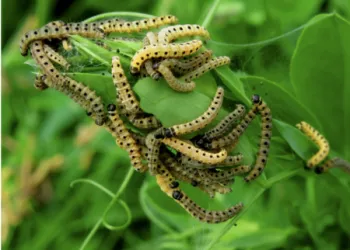Identifying the Causes of Plant Problems

TRY THIS DIAGNOSTIC TOOL:
Want to try a quick method to identify your plant problem? The UC IPM Plant Problem Diagnostic Tool is a self-paced interactive tool that takes you through the diagnostic process and helps you find what may be causing your plant problem. It’s easy and it’s free!
Eight Steps to Diagnosing a Problem
Diagnosing a plant problem, whether flowers, vegetables, indoor plants, or anything else you’re growing, is often a challenge since there can be so many different causes. The diagnostic process is like detective work. You need to ask lots of questions, collect, and evaluate information to figure out a likely cause. Here are the main steps:
1. Identify the plant
Knowing the plant and its proper name are important when searching for pest information.
2. Define the problem - what exactly do you see?

Specifically identify what appears to be wrong:
• Are there visible signs of the cause of the problem?
• What are the symptoms?
• What part of the part is affected?
• When was the problem noticed?
• Was the damage sudden or gradual?
• How much of the plant is affected?
• How severe is the injury?
3. Know what a healthy plant looks like
For comparison purposes, have a clear idea of the size, color, form, flowers, or fruit of a healthy version of the plant.
4. Learn what the common problems for the plant are
Good reference materials can help as you match your observations with descriptions or photographs of typical plant pests and diseases, and their related signs and symptoms. Verify that there truly is a problem vs a genetic mutation.
5. Consider the history of the plant and its surroundings
• How long has the plant been in its current location?
• Has anything changed for the plant itself or near it?
• What’s the weather been like – frosty cold, devilishly hot, super windy and dry?
• Did you fertilize recently, or use some chemical pesticide?
6. Look for patterns

• Do other plants of the same type have a problem?
• What about different types of plants?
• Are all the plants with the problem in the same general area or in different locations?
• Do you see damage to the same parts of the plants (e.g., growing tips, edges of leaves) on different plants?
7. Eliminate what it’s not
Narrow down your list of possible suspects by ruling out those problems you know for certain are not the cause of the problem.
8. Make a preliminary diagnosis
With the information you collected, decide what you think the cause of the problem is.
A few things that can help with your detective work:
• Examine the entire plant and the area around it, including the soil.
• Check out the leaves (both top and undersides), stems, roots, fruit, and flowers.
• Look for signs and symptoms of pests:
WHAT IS A SIGN?
Physical evidence of the cause – either the presence of the actual pest, or some part of it.
Examples:
• White powdery growth on the surface of leaves (fungal growth)
• Sticky honeydew on plant surfaces (waste from sucking insects)
• Piles of small jellybean-shaped droppings near plants (waste from deer)
WHAT IS A SYMPTOM?
Visible effect of the problem on the plant part.
Examples:
• Spots on leaves
• Yellowing leaves
• Wilting

